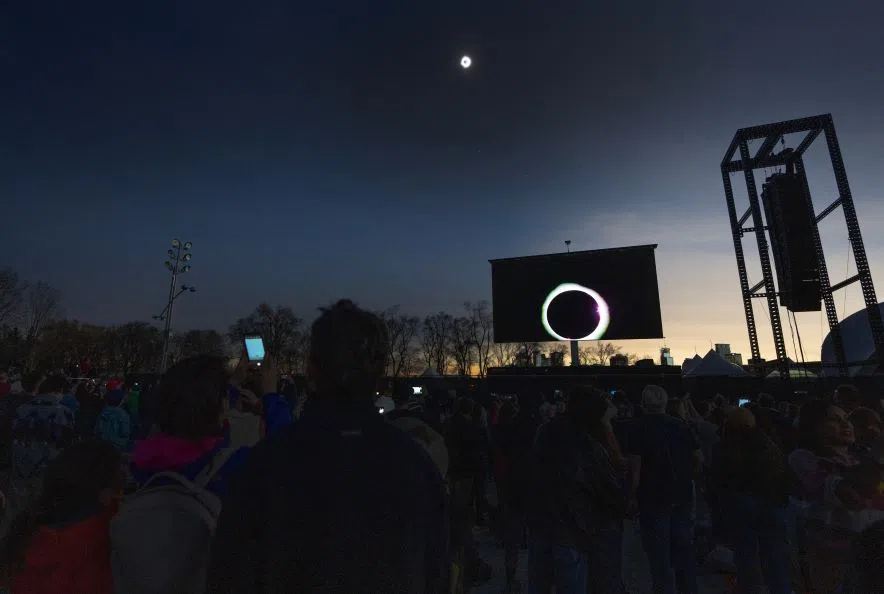A total solar eclipse has crossed over parts of Canada, plunging Earth-bound audiences into a moment of darkness and shared celestial wonder.
Eclipse watchers in Pelee Island, Ont., were the first on Canadian soil to see the sun move directly behind the moon around 3:12 p.m. Monday.
Large crowds gathered along the path of totality, which crosses through parts of Ontario, Quebec and Atlantic Canada before being set to exit North America at 3:46 p.m. eastern time.
This celestial dance, in which the moon, the sun and the Earth align, is possible thanks to some miraculous stage setting. The moon is about 400 times smaller than the sun, but it’s also about 400 times closer to the Earth – making both appear to be the same size in the sky.
Canadian astronaut David Saint-Jacques said eclipse watchers may glimpse giant solar flares as the sun’s corona encircles the moon’s black disc.
“That’s very interesting for scientists, but I think it’s also very moving for us … it’s one of those rare times when we have a direct connection with what’s going on in space,” said Saint-Jacques, who was part of a 204-day mission to the International Space Station starting in 2018.
“It’s a very direct reminder of the reality of the cosmic ballet, if you want, that’s constantly going on. I think that’s the magic of it – it’s the connection with the cosmos.”
While the next total solar eclipse in Canada is expected to pass through western provinces in 20 years, the phenomenon only happens in any given location roughly once every 360 years by some estimates.
“You feel like you’re part of the universe in motion,” said Carole Giangrande in Kingston, Ont. “There’s no human experience that can match it.”
Giangrande and Brian Gibson have been chasing solar eclipses for 45 years, their first dating back to Gimli, Manitoba, in 1979. But the Toronto couple said the chance to capture a solar eclipse never goes out of style.
“So much in the world right now is so rotten, it gives you such a feeling of positivity and people enjoying themselves, and wonder,” Giangrande said of watching a solar eclipse. “It’s beautiful.”
One in six people live in Canada’s path of totality, or about 6.1 million people based on 2021 census data, said Statistics Canada, noting the number is likely higher given rapid population growth.
Total solar eclipses have been central to some major scientific breakthroughs.
Helium was detected for the first time during an 1868 eclipse, and observations made during one in 1919 helped establish broad support for Albert Einstein’s general theory of relativity.
— With files from Mickey Djuric in Kingston, Ont., Morgan Lowrie in Montreal, Hina Alam in Fredericton and Sarah Smellie in Gander, N.L.
Fakiha Baig in Niagara Falls, Ont., and Jordan Omstead in Toronto, The Canadian Press











